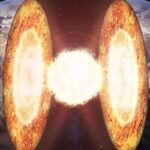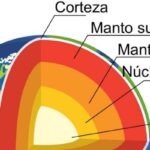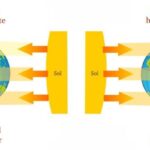We explain what they are and what the natural components of the Earth are. How they are distributed in the different layers of the planet.

The natural components of the Earth
The natural components of the Earth are the original chemical materials that make up planet Earth in whose presence, distribution and abundance the hand of man did not intervene.
These are chemical elements and their combinations, mostly in solid or liquid state, given that ours is a rocky planet. In this the Earth differs from the large gaseous planets such as Jupiter or Saturn.
In fact, Our planet is the largest, densest and most massive of the rocky planets in the Solar System with the greatest gravitational attraction, the largest magnetic field and the highest rotation speed.
It also stands out that it is the only planet on which there exists, as far as we know, water in a liquid state, and therefore familiar life forms: plants, animals, microbiotics and fungi. All of them constitute the planetary biome and are, in their own way, a natural component of it.
However, strictly related to what the Earth is made of, we can identify the following main elements:
- Iron (32.1%)
- Oxygen (30.1%)
- Silicon (15.1%)
- Magnesium (13.9%)
- Sulfur (2.9%)
- Nickel (1.8%)
- Calcium (1.5%)
- Aluminum (1.2%)
- Other minority elements (1.2%)
On the other hand, these elements are not uniformly distributed within our planet. On the contrary, are distributed in different proportions between the Earth's crust, the Earth's mantle and the Earth's core which are the three large internal regions of the Earth.
As one goes deeper into its depths, in fact, the constitution becomes more homogeneous, until reaching the core, composed almost entirely of iron (88.8%), with small amounts of nickel (5.8% ), sulfur (4.5%) and less than 1% of other heavy elements.
In the cortex, however, it is estimated that 47% of the planetary surface is made up of oxygen. For this reason, almost all the minerals that we find excavating in their upper layers are some type of oxides: silica (SiO2), alumina (Al2EITHER3), lime (CaO), magnesia (MgO), potash (KOH), soda (NaCO3) phosphorus oxide (P2EITHER5), titanium oxide (TiO2), iron oxide (FeO), etc.
On the other hand, Water is a ubiquitous compound on the Earth's surface and in the upper layers of the planet. Due to the water cycle, it is in liquid form (oceans, lakes, rivers and underground deposits, 97.5% of which is salt water), solid (ice, snow and glaciers, which is 69% of the world's fresh water) and gaseous (as water vapor in the atmosphere).
Continue with: Layers of the Earth
References
- “Earth” in Wikipedia.
- “Natural components of the Earth” in The world of Geography.
- “What are the natural components of the Earth?” in Life Persona.
- “What is Earth made of?” on Space.com.





